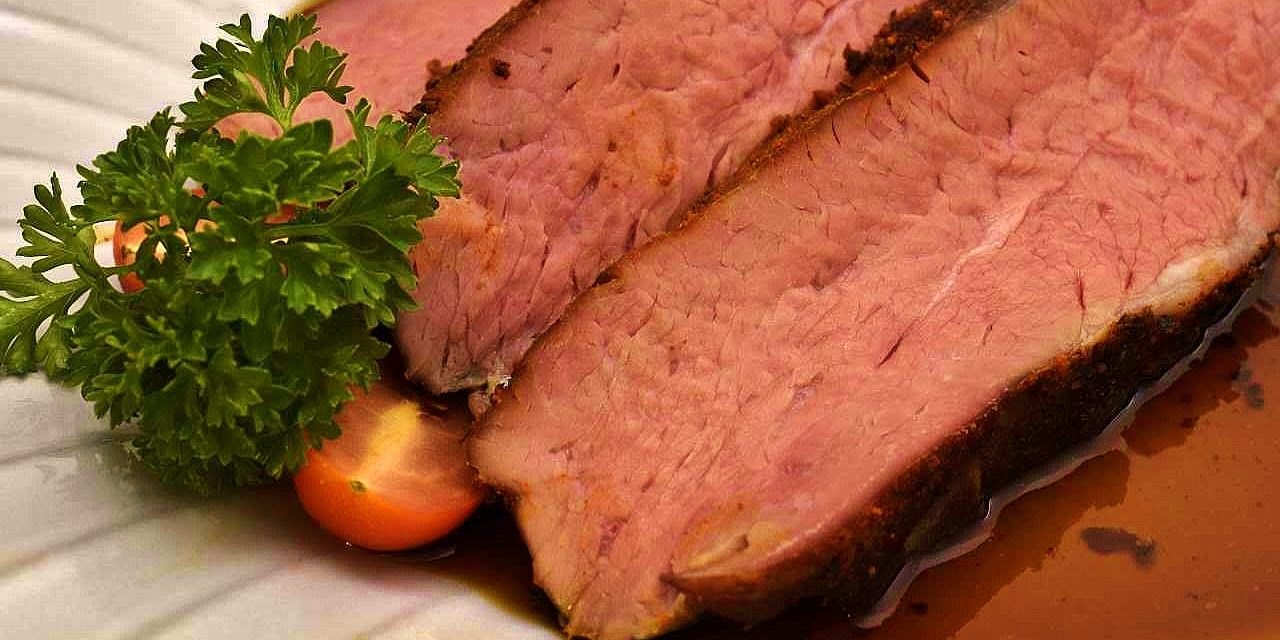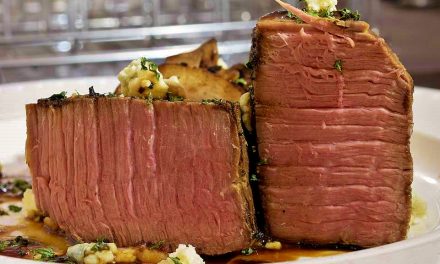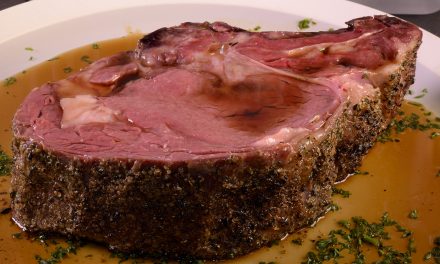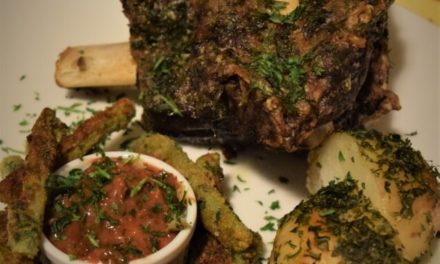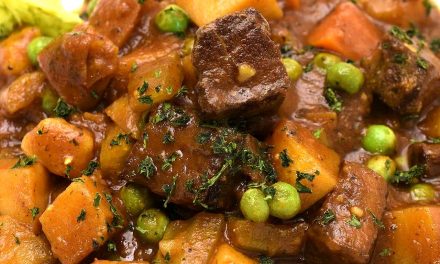“You can do this!”
BBQ aficionados and pitmasters alike have always been tolerant of a certain amount of chewiness inherent in beef tri-tip. This shortcoming was rationalized by reminding ourselves that the aptly named cut was typically priced competitively. Using sous vide tenderization, we can now have the best of both worlds.
This recipe features a stylistically economical approach to processing and serving the cut. The excellent flavor and texture of the smoky tri-tip can stand on its own. For the experienced sous vide practitioner, there is ample opportunity for more decorative up-scaling after the initial two faceted process.
On your mark
Beef tri-tip has been popularized in recent years and the price has climbed upward as a result–it is worthwhile shopping around. More and more markets feature the cut either whole or at least large enough to serve as a roast–“peeled” (trimmed) or “unpeeled” (untrimmed). We were fortunate to find the unpeeled version on sale at $3.27/lb. in mid March.

Above: whole, unpeeled, from the underside.
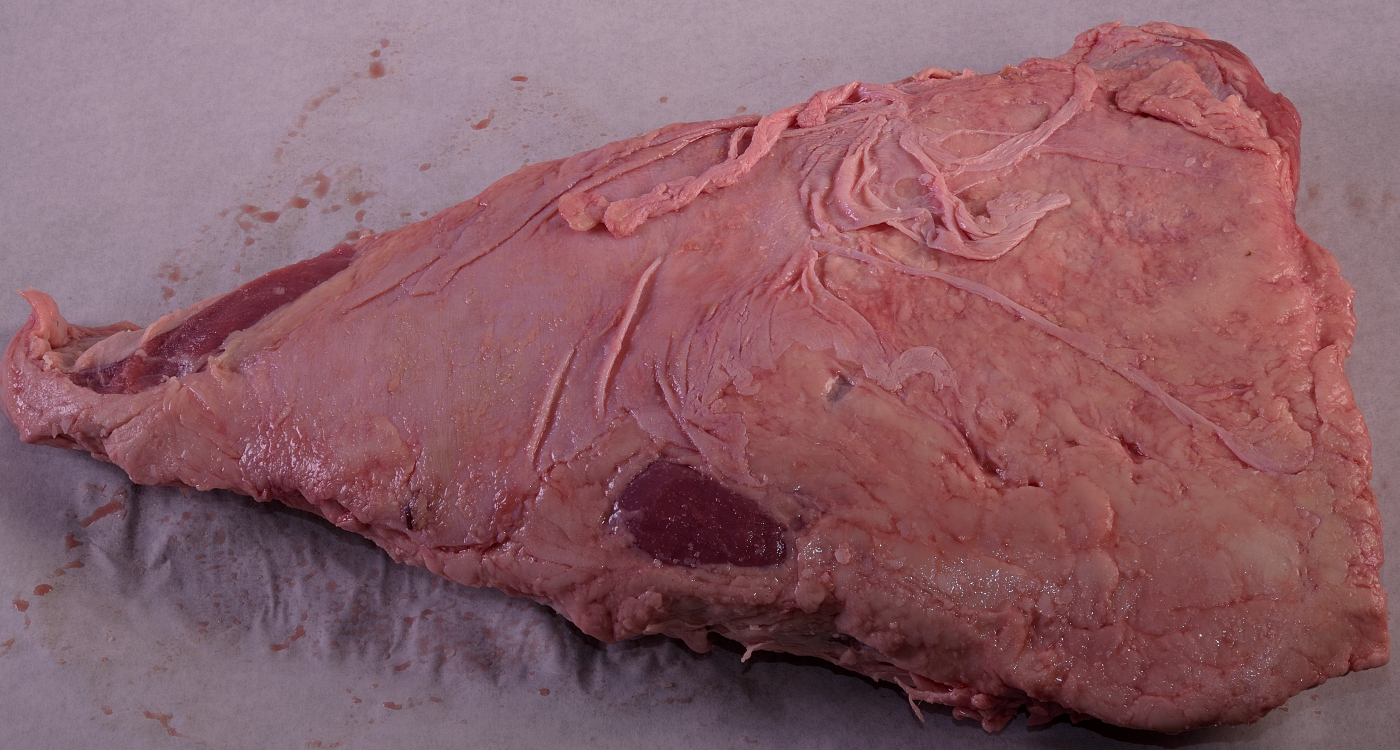
Whole, unpeeled, from the skin side.
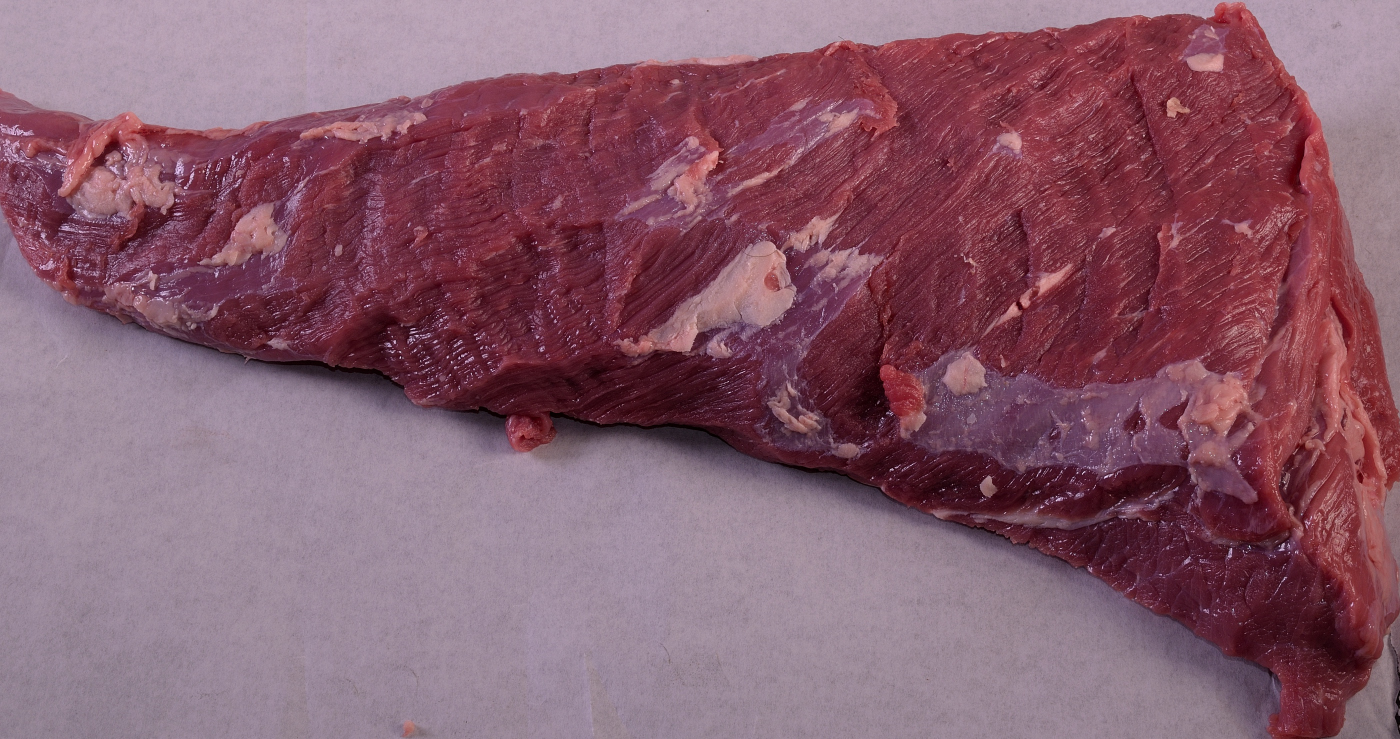
Peeled, from the skin side, trimmed. The trim amounts to about 30% of the total weight. If you are in possession of it, click on the link to learn how to make TRI TIP BROWN GRAVY.
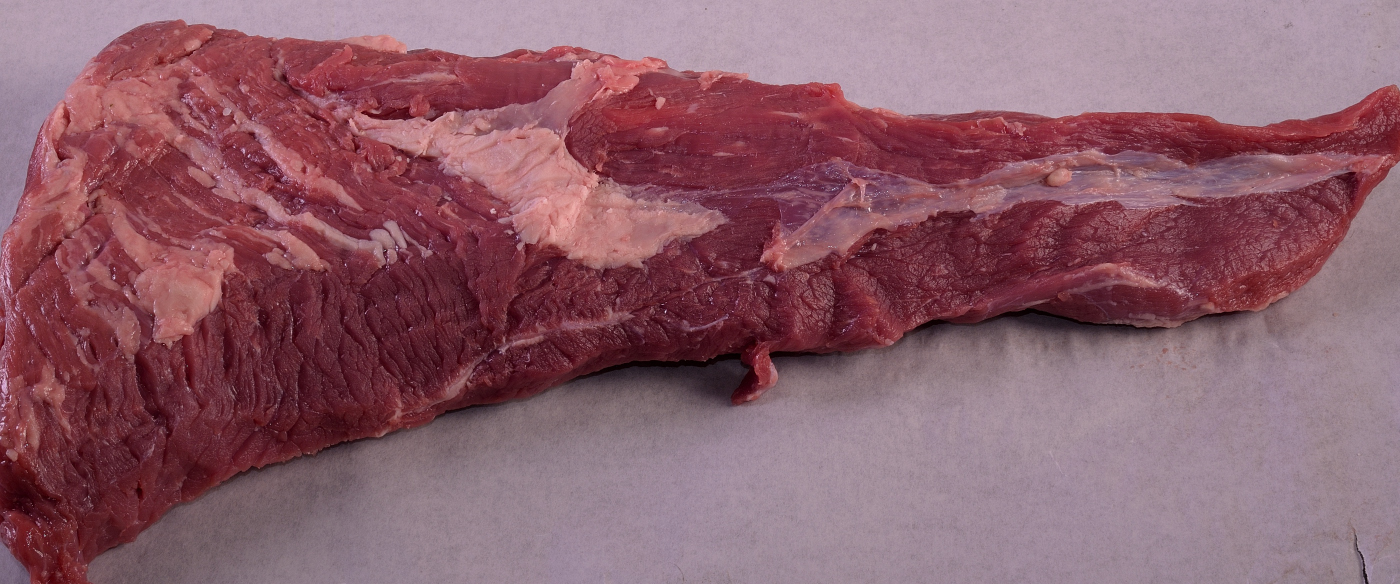
Peeled from the skin side–usually about 3 lb/1.4 Kg.
Vacuum sealed in heat rated bags, these roasts were processed at
129 F/54 C (rare) for twelve hours.
Don’t be afraid to take full advantage of sous vide’s unique ability to create the texture that exceeds your expectations. At 129 F/54 C, it is very difficult to over-tenderize the steak. If you prefer an appearance of doneness beyond rare, the tenderization process will occur faster. For more detailed information, refer to the guide linked HERE.
While time determines texture/tenderness, the amount of time that proteins spend in the bath cannot be used to precisely MEASURE tenderness–this requires practice and the acquisition of a small amount of skill, explained HERE.
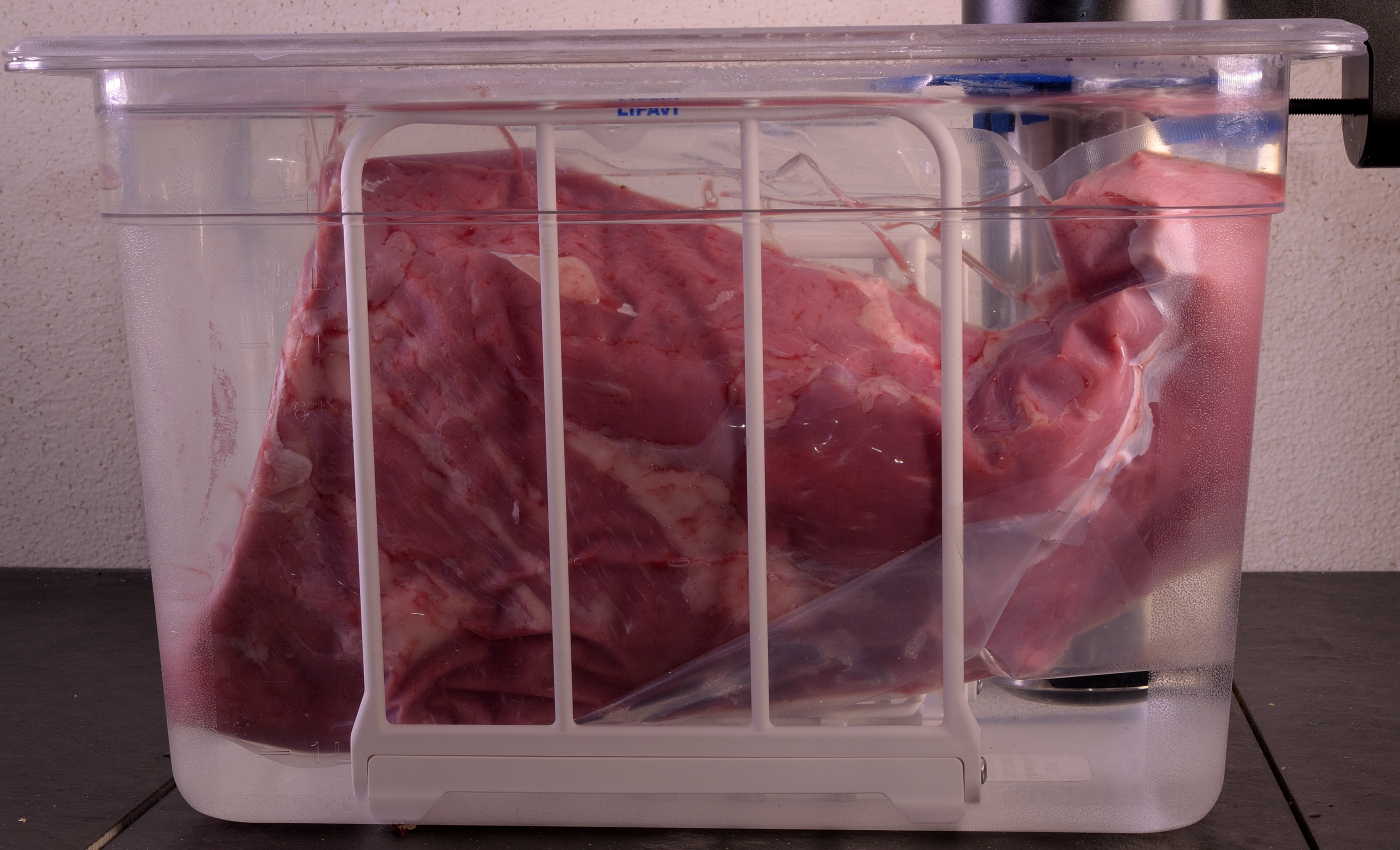
Above: Lipavi C10 container, N10 polycarbonate racks. Lipavi C10L-UNIR lid.
Once the 12 hours have elapsed, and/or your roast has achieved the desired level of tenderness, shock the package in iced water until it achieves 70 F/21 C. Refrigerate to 40 F/4 C. For more detailed information on the shocking process, click the link HERE.
Into the smoker
Remove the roast(s) from the packaging and pat dry with a paper towel. Reserve the juices if desired and clarify as explained HERE. Season as desired or use our specially designed crust process as shown below, explained HERE.
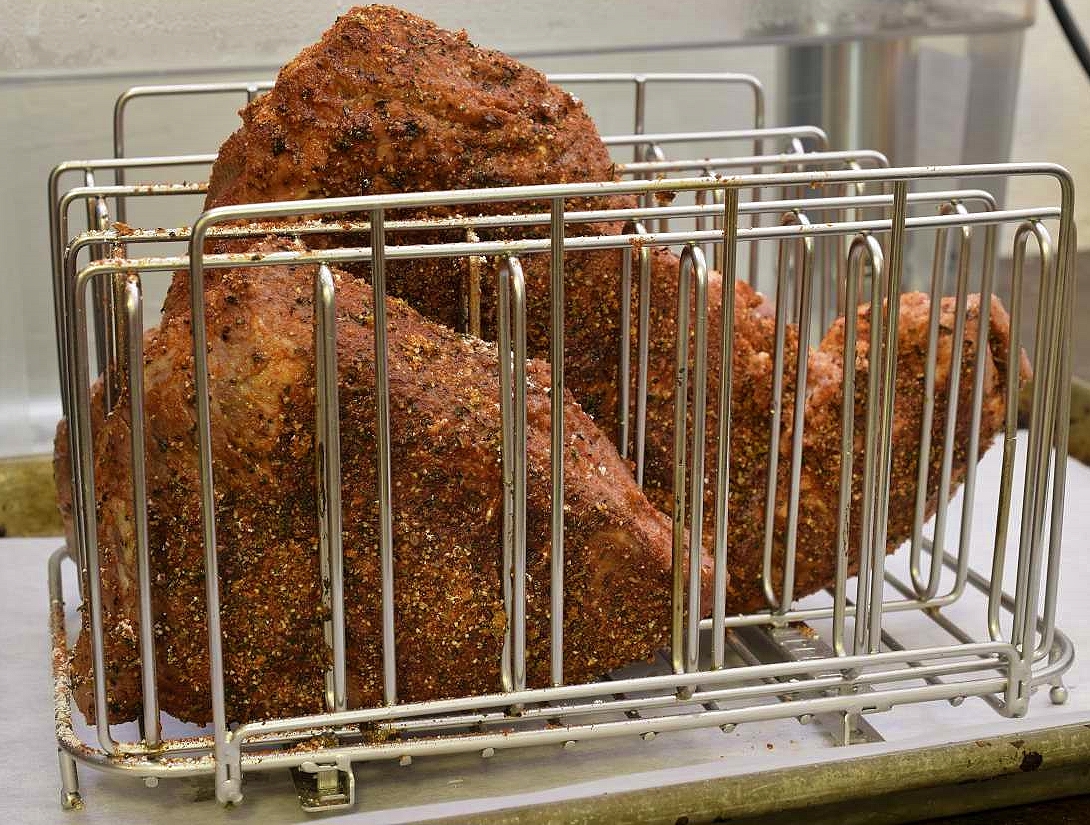
For the purposes of this demonstration, we hot smoked roasts in a pellet grill set to 180 F/82 C until the internal temperature achieves at least 125 F/52 C–we allowed four hours. I use a cold start to avoid exposing myself to the toxic gasses. If preferred, a conventional oven set to 225 F/107 C can also be used.
Time affects the achievement of the appropriate internal temperature, but, again, a clock or timer cannot be used to MEASURE the internal temperature. Invest in a probe thermometer–at least until you learn to approximate the level of doneness by sight and feel.
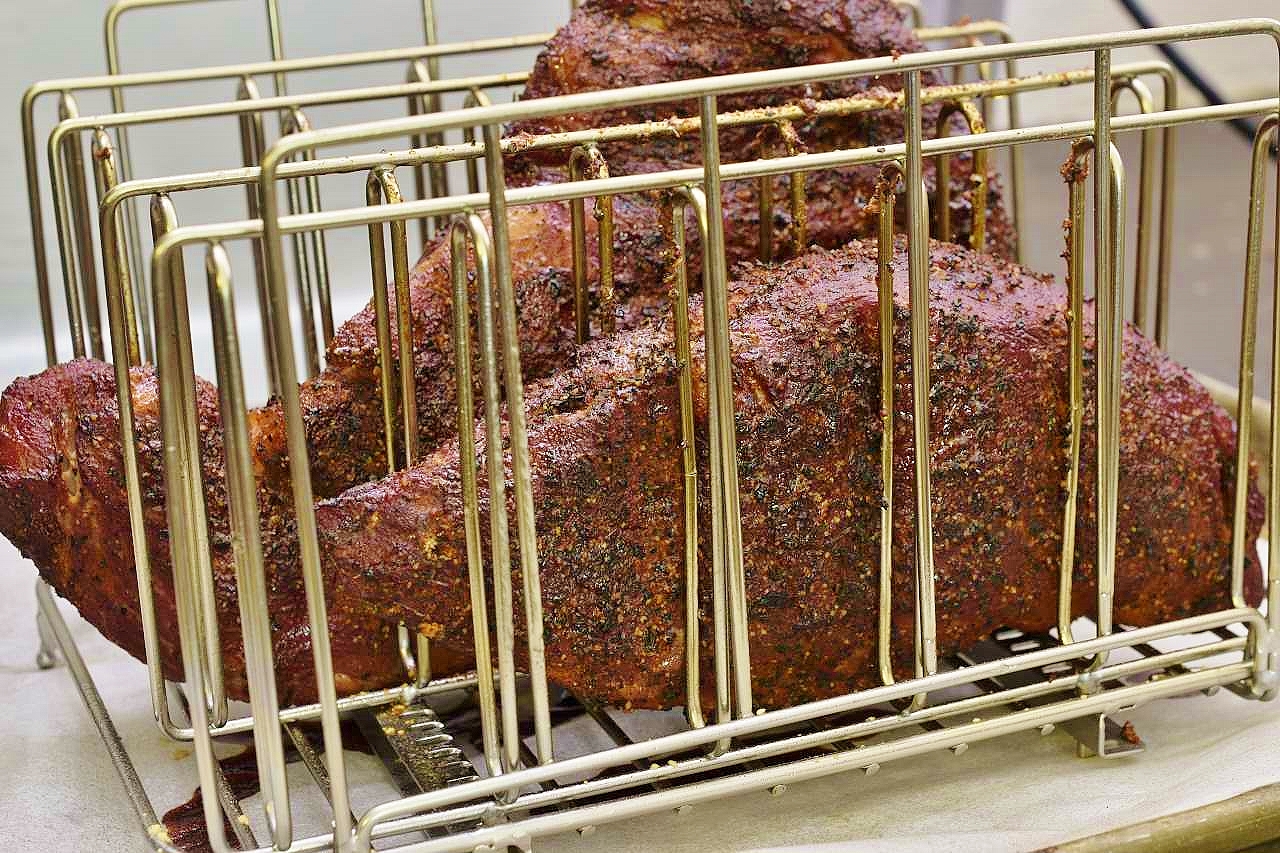
The appearance of your roast is also useful as a guide to your decision as to when the roast is “ready.”
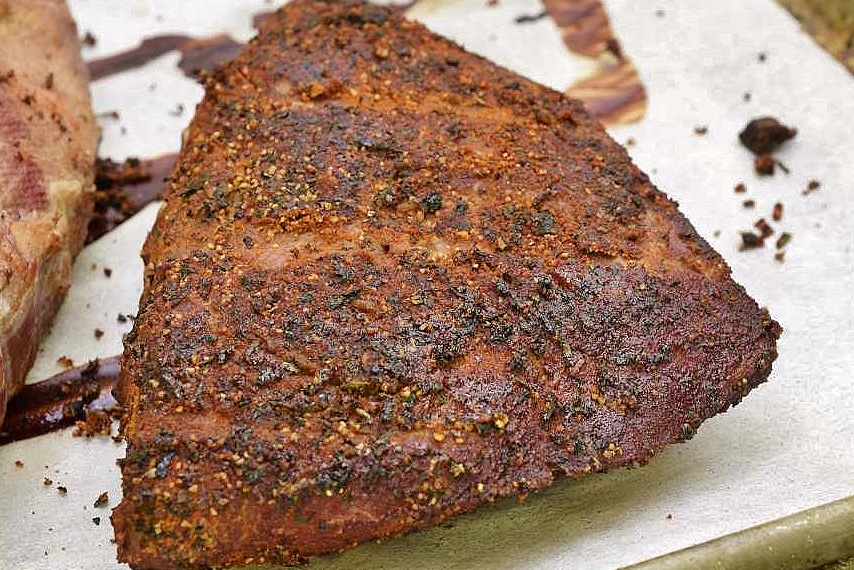
This rub is a variation of the recipe HERE, with paprika, ground black pepper and sugar added to add a little variety.
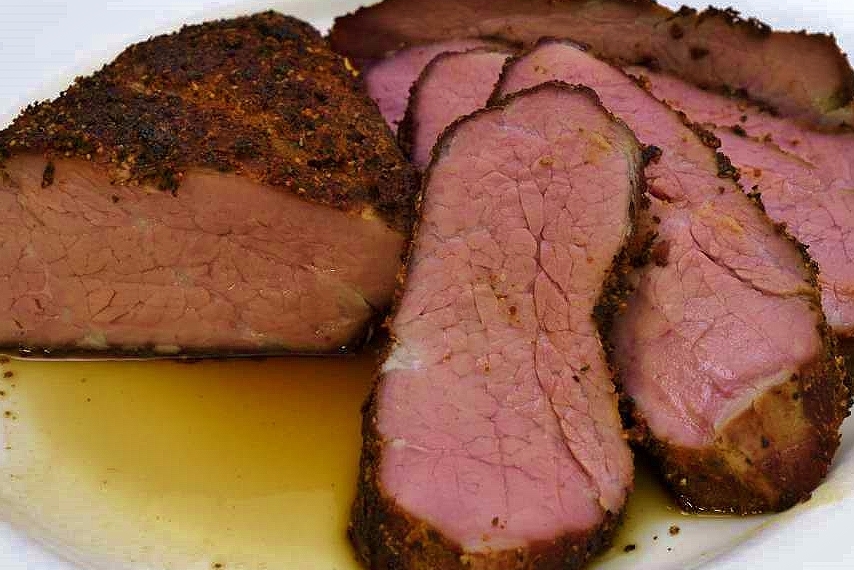
The medium rare appearance is preserved in this case, even though the roast was processed, shocked and rekindled. This is dependent on the particular cut used as well the original time and temperature utilized. I find that tender cuts like New Yorks, filets and rib eyes are less tolerant of the shocking and rekindling model.
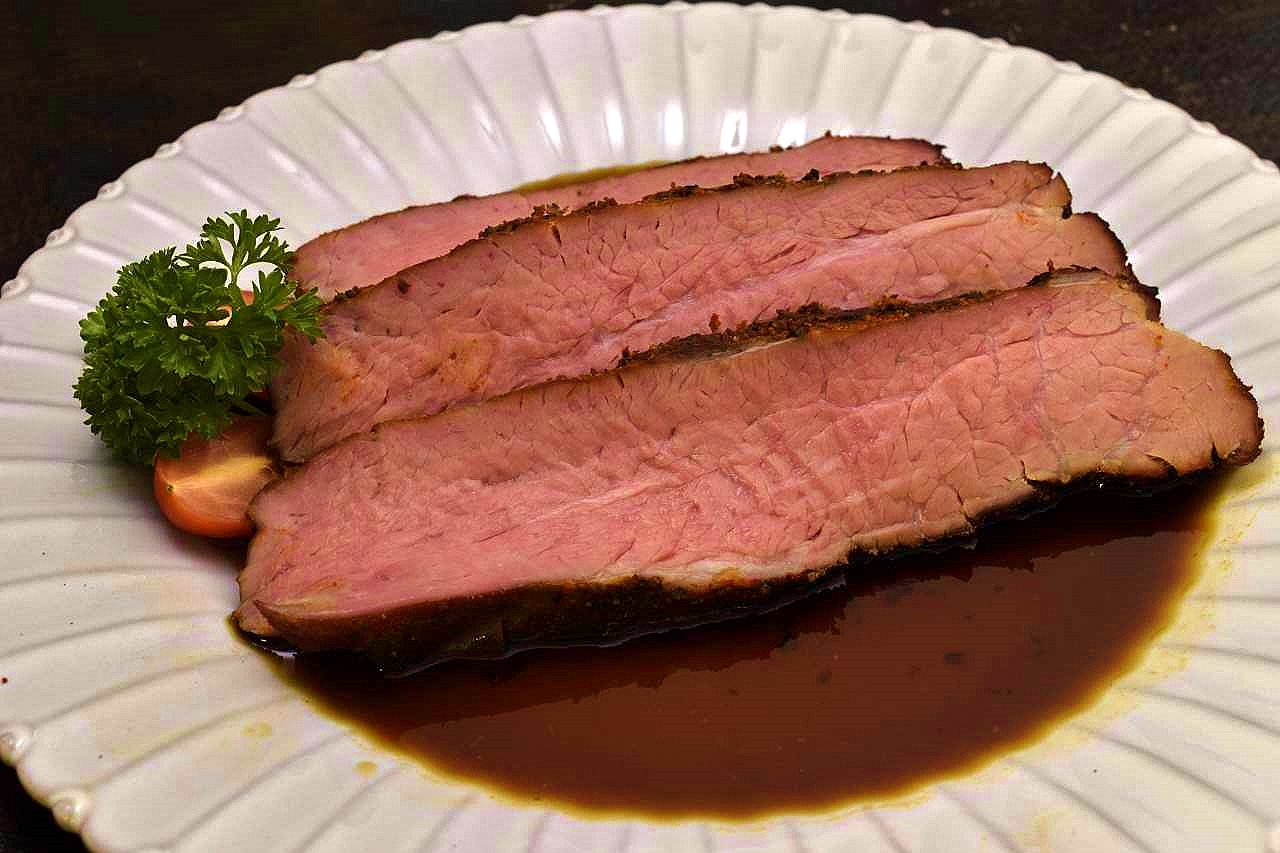
Presentation is important, but much simpler than most anticipate. Less is almost always more. In the picture, we used heavily reduced but otherwise un-thickened version of TRI TIP BROWN GRAVY.
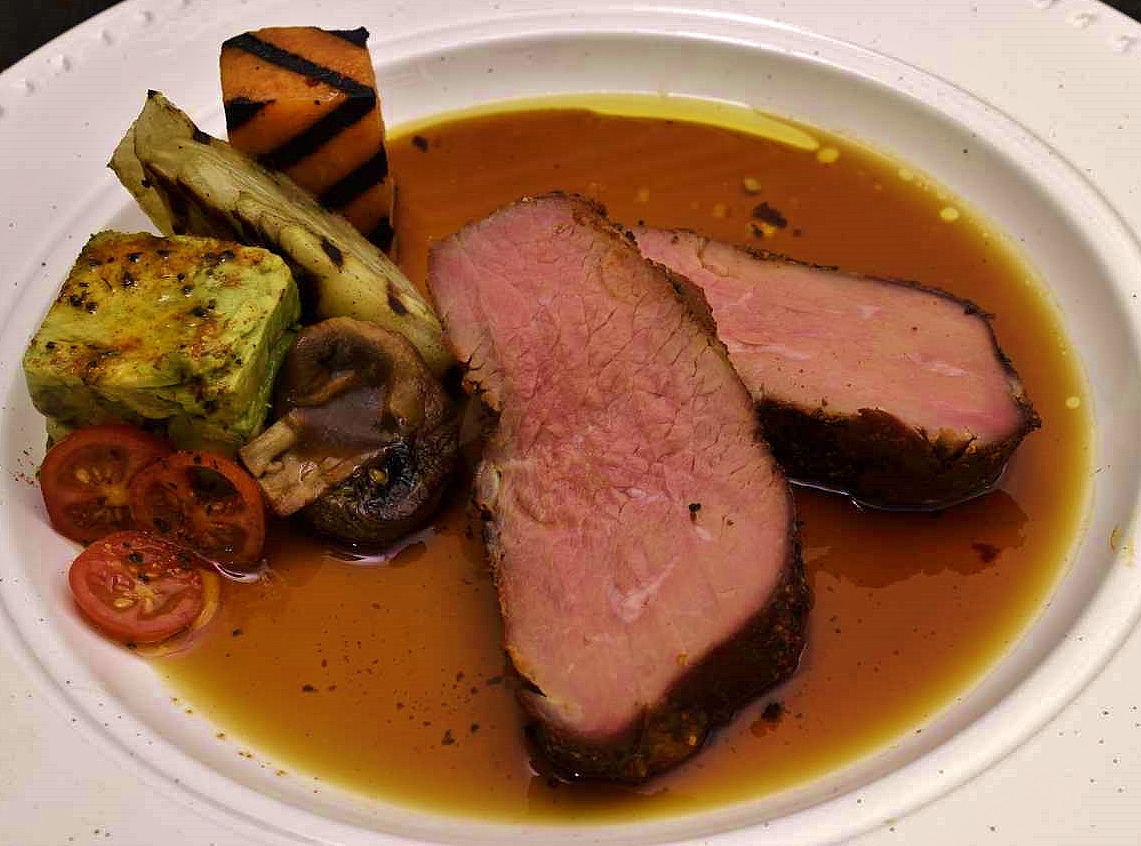
On the other hand, some of us just can’t help ourselves.
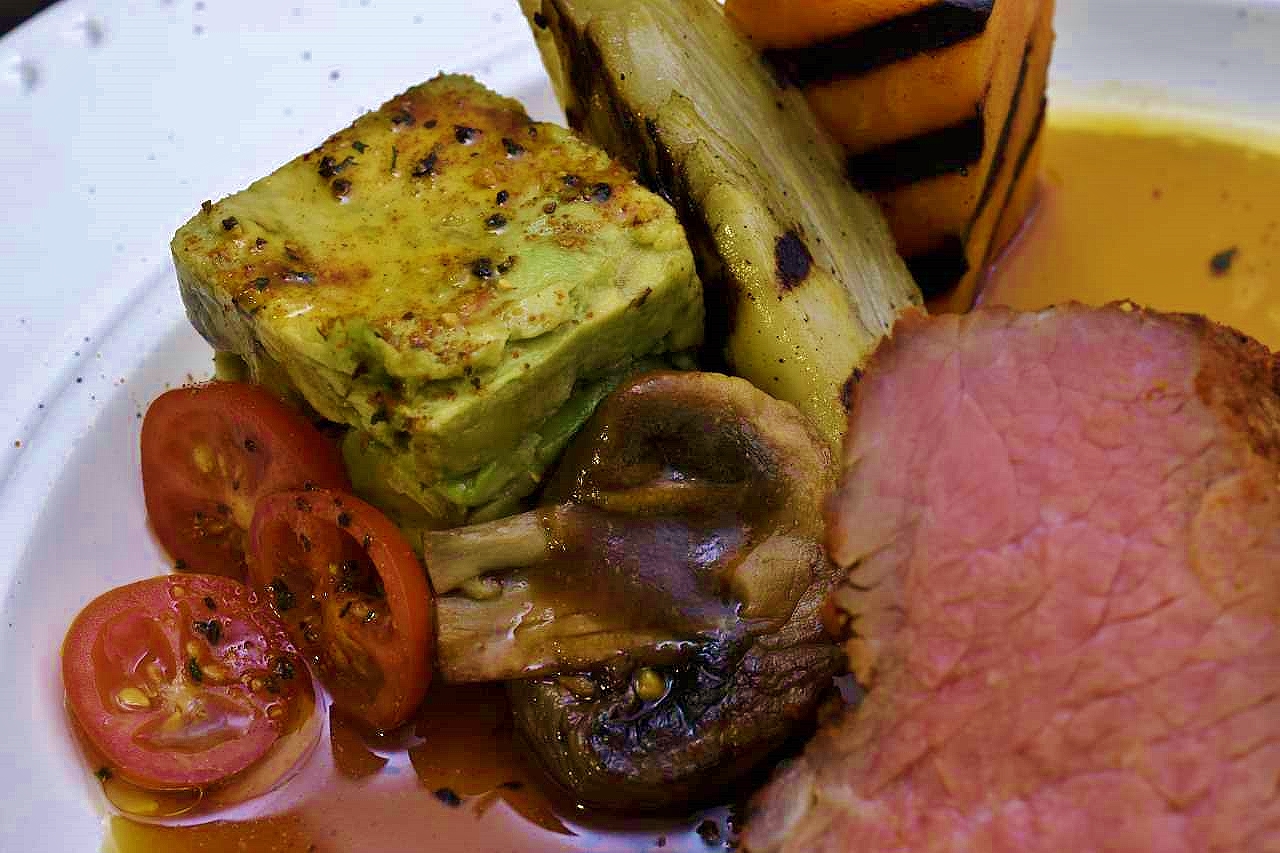
Clean plates, empty space around the rim, a little altitude, a little attitude–they all go a long way to an eye-catching appearance.
Sous-b-q hot, sous b-q cold
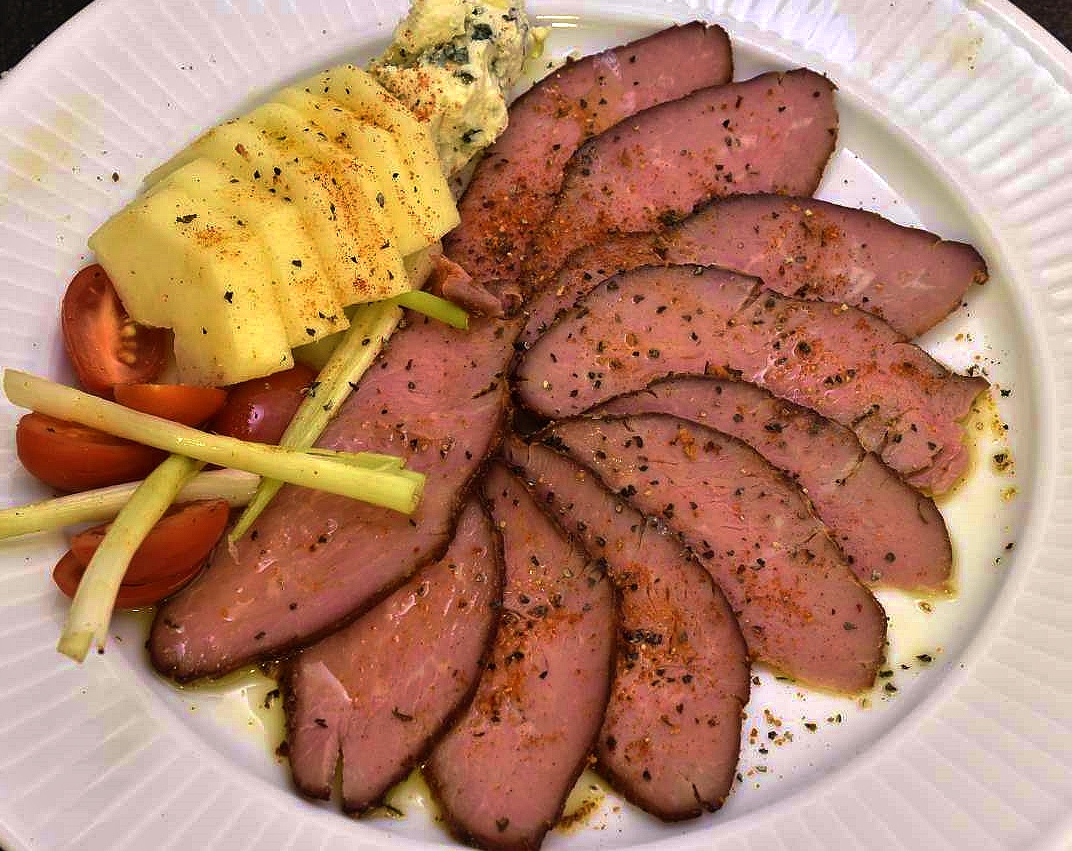
Smoke flavors carry over into the refrigerated product quite well, even when served the next day.
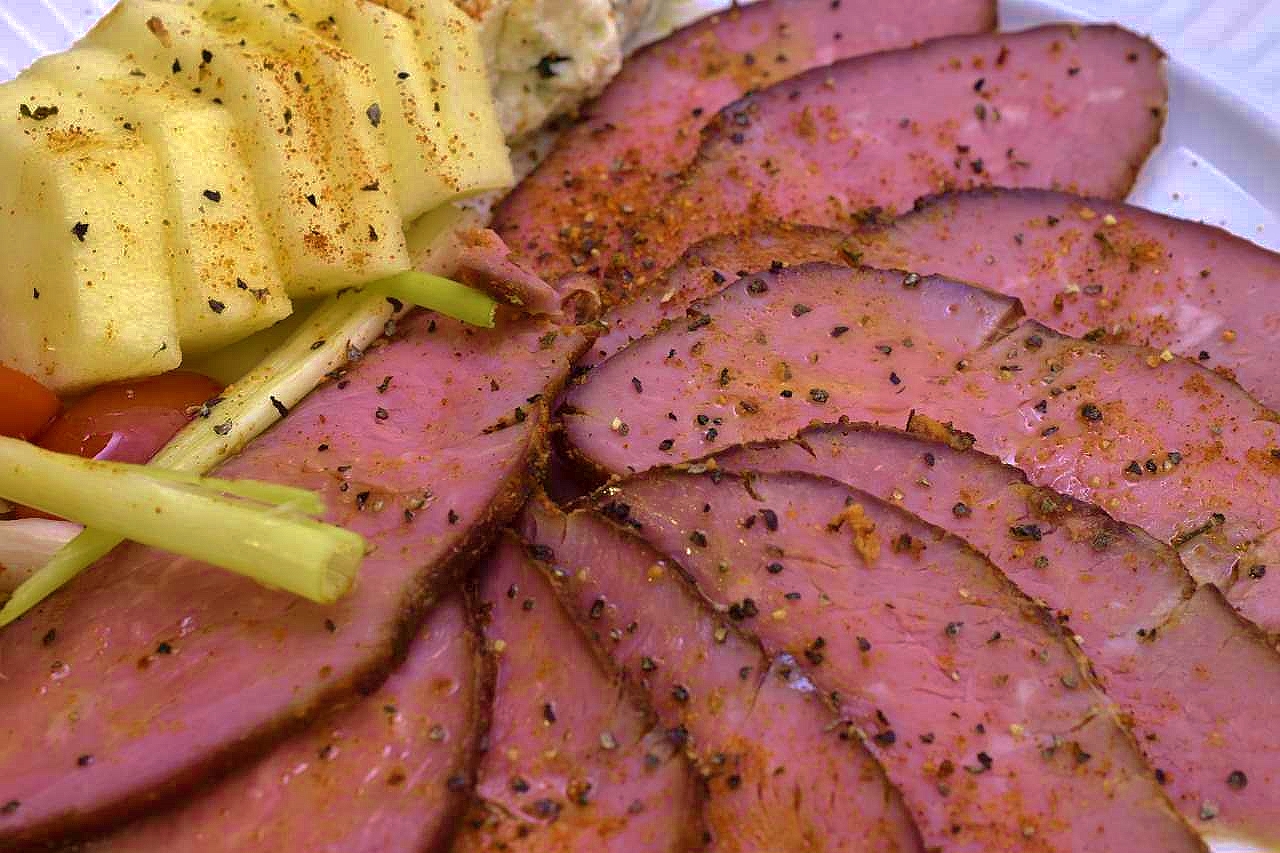
Rather than re-kindling and re-re-kindling, a nice cold plate makes for a vibrant alternative to the Cheeseburger Lunch model.

